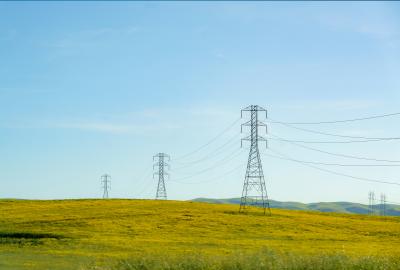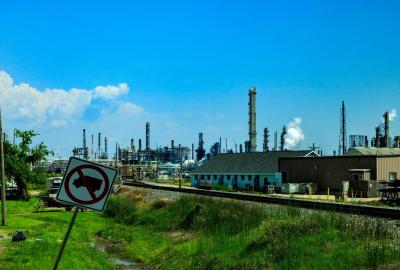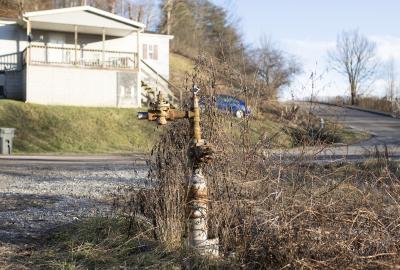Fighting wildfires with fire: Can prescribed burns save our forests?
Native wisdom and modern science bring "good fire" back to western woodlands.
As dusk fell over a redwood-forested mountainside above Watsonville, California, Esak Ordoñez waited for a signal from the “burn boss.” Dressed in fire-resistant green pants and a yellow helmet, Ordoñez was flanked by four other members of his crew, who stood ready to contain any breakaway flames.
For Ordoñez, a member of the Amah Mutsun Tribal Band, this moment had been a long time coming — generations, in fact. Before European settlement, fire was an important part of the life cycle of North American forests. Even in rain-soaked coastal redwood groves, the Amah Mutsun routinely burned the forest floor to flush game, clear underbrush and propagate grasses to use in weaving baskets.
Newcomers suppressed the practice, not understanding that fire could be a tool to promote forest health. In 1850, California outlawed intentional burning in the newly formed state — just one of many painful policies that pushed Native people (including the Amah Mutsun) off their lands and subjected them to many acts of violence and oppression.
Now, standing in the Santa Cruz Mountains on what had once been his ancestors’ domain, Ordoñez was bringing what forest managers call “good fire” back to the landscape, as a participant in a three-day training presented by Central Coast Prescribed Burn Association.
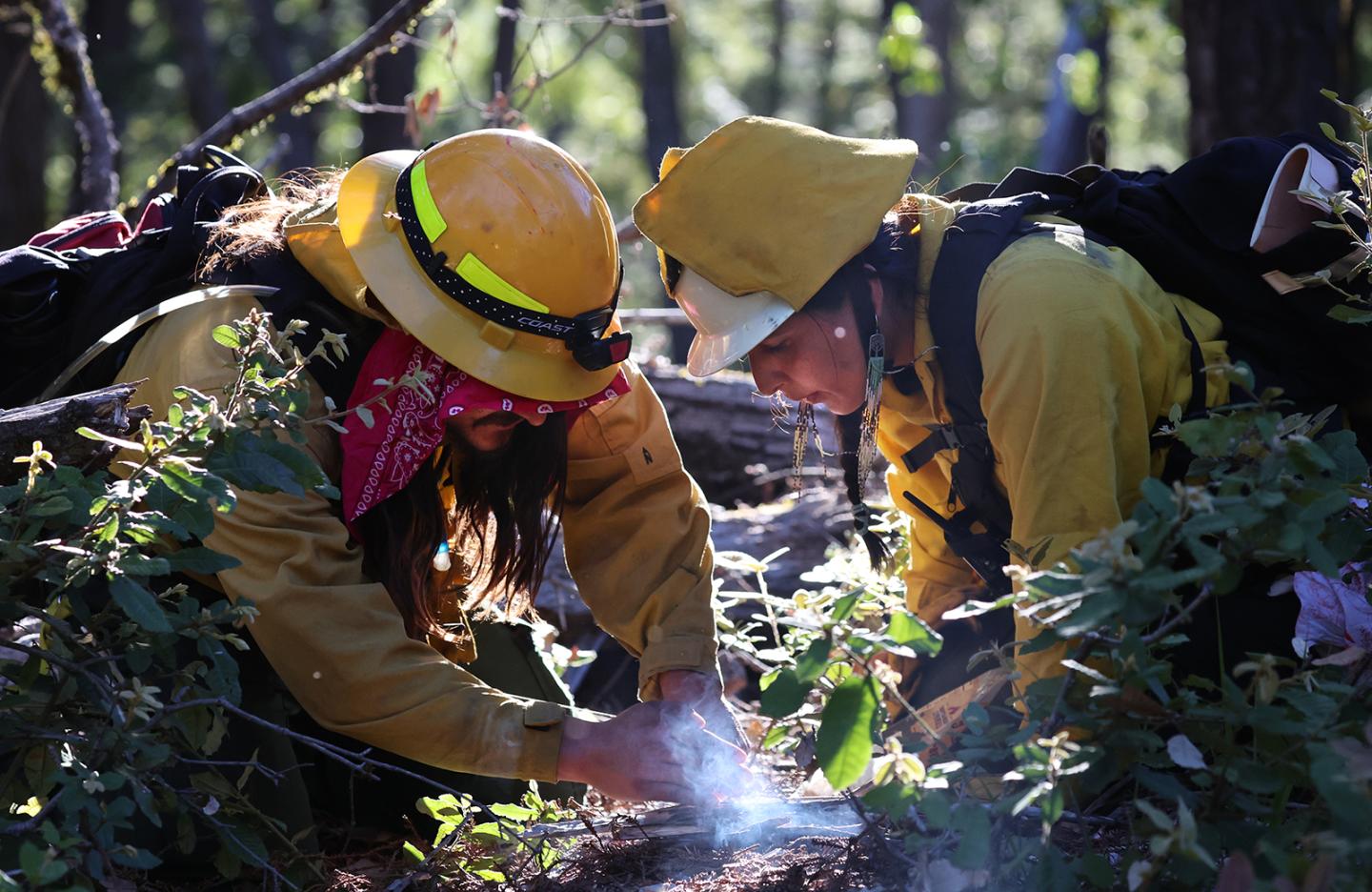
Esak Ordonez and Chanel Keller opened the training exercises with an offering flame to the land. (Shmuel Thaler)
Prescriptive burning reduces the buildup of brush, dead wood and small trees — the fuel that can turn a flare-up into a devastating wildfire.
“Fire was one of the earliest land management tools introduced to California, thousands of years ago,” Ordoñez says. “When we almost lost our entire tribe, we also lost knowledge of cultural fire. Now we’re trying to regain a foothold for ourselves in this area and return the forest to healthy cycles.”
A changing climate brings greater risks
As climate change progresses, hotter and drier conditions make it easier for wildfires to start, and to turn into large, uncontrolled blazes. Scientists identify climate change as a key contributing factor in the rise in fire activity like 2021’s Dixie Fire, which burned through nearly a million acres of Northern California, destroying more than 1,300 homes and other structures. Over three months, the state spent $637 million to bring the fire under control.

Rapidly reducing climate pollution, such as carbon dioxide and methane from the production and burning of fossil fuels, remains our best chance to avoid the worst effects of rising temperatures. At the same time, we urgently need new measures to reduce the growing risk of catastrophic fires from the climate change that is already underway.
Highly destructive wildfires were rare a century ago, before climate change supercharged the hot and dry conditions that can turn wildfires into life-threatening catastrophes. As wildfire season stretches into spring and autumn, the proportion of the U.S. population exposed to wildfire has more than doubled over the past two decades. To protect property and harvestable timber, governments adopted a doctrine of quickly extinguishing wildfires of any size. Smokey the Bear, the U.S. Forest Service’s long-running advertising icon, warned with a sternly pointed finger that “Only YOU can prevent forest fires.”
“Ironically, overly aggressive fire suppression over the last 100 years has removed an important element, fire, that helps keep forests healthy and controls fuel build-up,” says Eric Holst, associate vice president of forestry at Environmental Defense Fund.
Bringing back “good fire”
These policies are now shifting. The U.S. Forest Service estimates that federal land management agencies carry out more than 4,000 intentional burns successfully each year. The return of beneficial fire and other science-based forest management tools could be a turning point for western forests, many of which depend on fire to reproduce.
But the work is costly, labor intensive and dependent on ideal weather. And even a well-planned burn can take a disastrous turn. In 2022, gusting winds turned a fire started by the Forest Service into the largest wildfire in New Mexico history.
To reduce the risks, fire managers work closely with communities and develop multiple contingency plans in case of wind shifts or unforeseen events. At the Watsonville training, ignitions stopped around 10:30 p.m., then crews took shifts monitoring the site all night until the rest of the participants arrived the next morning to “mop up.”
Holst, a registered professional forester, participated in the Watsonville training. “To be part of a team that can safely manage a fire to make a forest healthier has long been a dream of mine,” he says.
Scientific research supports the transition from fire suppression to restoration using prescribed fire and other methods. In one 2023 study of California conifer forests published in Science Advances, the risk of high-intensity fire was reduced by 64% in areas recently burned at low intensity compared to similar unburned areas.
But with demand for training far outstripping supply — there were 150 applications for 40 openings in the training — the pool of professionals who are qualified to carry out prescribed burns is growing slowly. State and federal agencies have been using fire to manage forests on a relatively small scale in places like the North Yuba Project in the Tahoe National Forest. But they lack funding and personnel to quickly ramp up the work to the scale that’s needed to protect increasingly vulnerable western forests.
A $7 billion boost for proactive fire management
For Holst and others at EDF, part of the solution lies in elevating the role of tribal partners who have deep expertise in working with forest fires. So-called “cultural fire” is managed by Native Americans and rooted in thousands of years of experience in small-scale burning for cultural and religious ceremonies, and to aid in hunting or other endeavors.
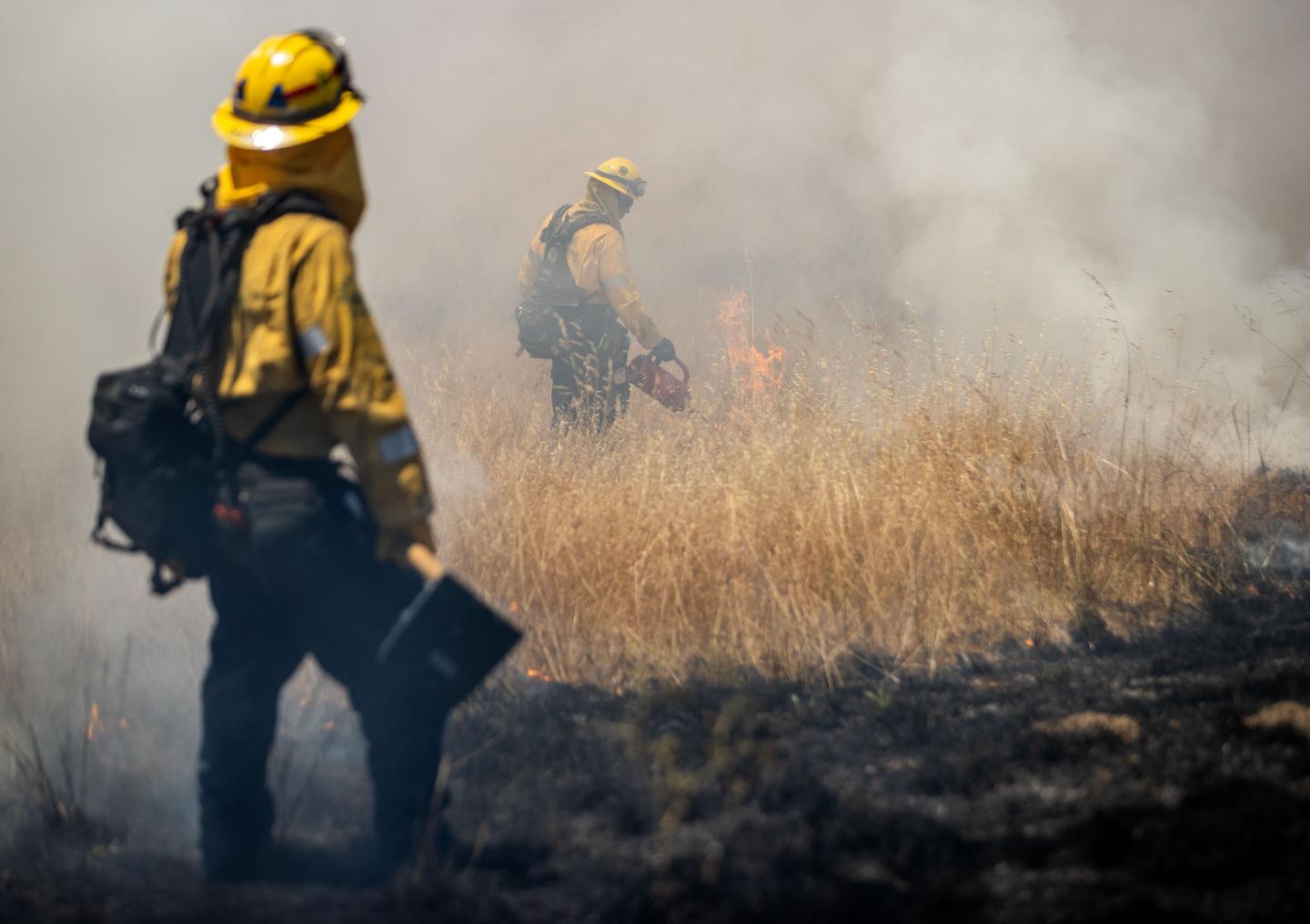
EDF is working to steer federal funds and policies in this direction, as well as to create markets in the private sector for slash piles (branches and other woody debris left over from logging), rather than burning them or leaving them to become tinder.
Along with prescriptive burning, mechanical thinning is another critical strategy to reduce the severity of fires and improve growing conditions for remaining trees. Thinning removes underbrush and standing trees, to make forests more like those that existed before burn-suppression policies and intense timber harvesting that removed old growth.
The Bipartisan Infrastructure Law and the Inflation Reduction Act included more than $7 billion to enhance the nation’s ability to mitigate and respond to wildfires. The funding has allowed the Interior and Agriculture Departments to begin to shift wildland fire response to a more proactive approach. In 2023, the departments reduced excessive vegetation over a record 6.85 million acres (an area larger than the state of Vermont).
“People, property and forests themselves can survive when fire strikes,” Holst says, adding that low-intensity fire can help make trees healthier by reducing competition for water, sun, and other nutrients. “We can use tools like fire to make our forests more resilient, but there’s no time to waste.”
Rekindling a tradition
On the steep hillside above Watsonville, Ordoñez and about 40 other participants had spent much of the first day with shovels and other equipment, setting up control lines — fire breaks where flammable material is removed. On day two, the scheduled burn had to be delayed, due to windy, dry air. Shortly after sunset, the humidity rose and the wind calmed.
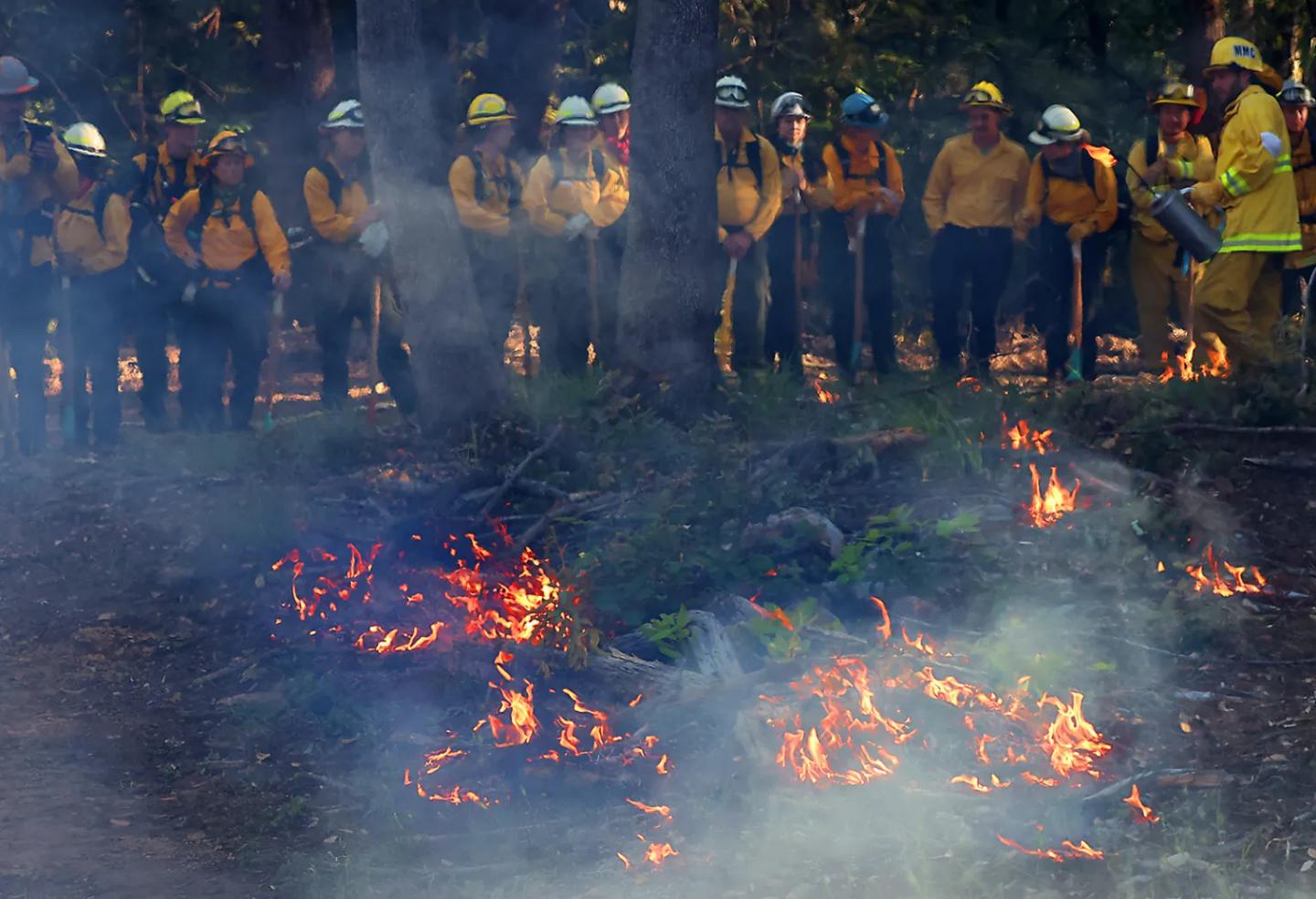
With the burn boss’s go-ahead, Ordoñez flicked the spout of his drip torch — a canister filled with a mix of gasoline and diesel fuel — splashing burning liquid across the brushy vegetation. The flames, seemingly reluctant at first, picked up intensity and began to move down the hill, lighting up the reflective clothing and watchful eyes of crew members.
Working on one small parcel at a time, the crew burned six acres over the next several hours. Guided by moonlight and headlamps, they took turns watching for flare-ups through the night. The next day they combed over every square meter of the charred ground for hot spots, before stashing away hoses and tools and heading for home — leaving behind a healthier and more resilient forest.
For Ordoñez, bringing beneficial fire back to his ancestral lands is good for the forest, and good for the spirit.
“At the beginning of each burn, when we start with a song or an offering, you feel this emotional connection to the landscape,” he says. “That feeling of fire being a part of life is always present.”
